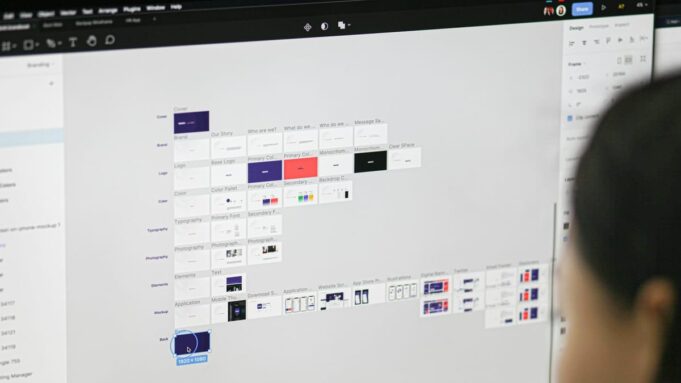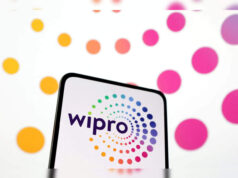The Performance Breakthrough: 50% Latency Reduction
Figma will leverage Gemini 2.5 Flash, Gemini 2.0, and Imagen 4, with Gemini 2.5 Flash integrated into image editing and image generation capabilities. The company found that using Gemini 2.5 Flash reduced latency for its Make Image feature by 50%, providing a notable boost for its 13 million monthly active users.
This improvement allows designers to generate images and prototypes more quickly, reducing waiting time for renders and enabling focus on design refinement. The collaboration aims to let designers generate visuals and make edits almost instantly, eliminating lag between an idea and its execution.
Key AI Capabilities Now Available in Figma
Gemini 2.5 Flash: Speed and Context
Google positions Gemini 2.5 Flash as a price-performance workhorse with large context handling—useful when prompts need product specs, brand rules, and complex design requirements. This enables designers to provide detailed instructions and receive more contextually appropriate outputs.
Imagen 4: Photorealistic Image Generation
Google’s text-to-image model empowers teams to produce superior concept art and prototypes without leaving the platform. Imagen 4’s ability to generate photorealistic images from textual descriptions allows designers to quickly visualize ideas and create compelling visuals for presentations and user testing. This eliminates the need for external image generation tools, streamlining workflow and reducing context switching.
Streamlined Image Editing
Beyond generation, Gemini’s capabilities extend to image editing directly within Figma, reducing the need to bounce between Photoshop, Canva, or other tools. Designers can now iterate on visuals without interrupting their creative flow.
The Core Problem This Solves
Design requires constant iteration—rapidly prototyping, testing, and refining ideas based on feedback. The integration addresses a critical pain point: the need to constantly switch between different applications for various tasks.
With Gemini integrated into Figma, design teams can move from concept to final product in less time, with fewer manual edits and more creative freedom. By bringing AI-powered generation and editing directly into Figma, designers stay focused and avoid distractions associated with using multiple tools. This streamlined workflow leads to increased productivity and a more seamless design experience.
Why Figma Chose Google’s Gemini
By partnering with Google and integrating Gemini, Figma avoids building its own large-scale AI model and instead taps into one of the most advanced systems available. This strategic decision allows Figma to focus on its core strengths: providing a collaborative and intuitive design platform.
Gemini models are trained on vast datasets of images and text, enabling them to generate realistic and creative visuals. By leveraging these capabilities, Figma offers its 13 million monthly active users access to cutting-edge AI technology without requiring specialized AI expertise.
The Competitive Landscape
Figma’s move aligns with a growing trend of design and productivity apps integrating major AI models:
- Adobe: Heavily leverages Firefly engine for generative image creation in Photoshop and Illustrator, allowing users to generate and manipulate images using text prompts
- Canva: Uses Magic Studio to automate layouts and graphics, with features like automatic background removal, image enhancement, and content generation
- Figma: Now integrates Gemini suite for best-in-class image generation and editing capabilities
The timing is strategic. Figma’s IPO earlier this year highlighted the company’s growth potential in the design software market. The Gemini integration enhances Figma’s value proposition and demonstrates commitment to innovation during competitive market pressures.
Real-World Design Benefits
For Individual Designers: Faster ideation, quicker prototyping, and less context switching between tools
For Design Teams: Improved collaboration through shared, AI-assisted workflows within a single platform
For Enterprises: Best-in-class image generation and editing capabilities accessible to all customers with access to AI, with organization-level controls for AI access
The Broader Partnership Strategy
The partnership between Figma and Google underscores a growing trend of collaboration between technology companies. By combining their respective strengths—Figma’s design platform and Google’s AI expertise—the two companies create a powerful tool benefiting designers worldwide.
Google emphasized that 65% of Google Cloud customers already use its AI-based products, and partnerships like this expand Gemini’s reach into creative industries. This collaboration highlights AI’s potential to transform the design process and empower designers to create more innovative and impactful work.
What’s Next?
Keep an eye on Figma’s updates and explore how Gemini AI can revolutionize your design workflow. The integration of Gemini is just the beginning of Figma’s AI journey—the company is likely to introduce new AI-powered features and capabilities in the future.
By staying informed about these developments, designers can take advantage of the latest AI tools and techniques to enhance their work and deliver better results faster.
The Design Future Is Here
As AI becomes integral to design workflows, Figma positions itself as a leader in creative technology. The Gemini integration represents a fundamental shift in how designers work—from using separate tools for different tasks to having an unified, AI-enhanced collaborative platform. This is not just an incremental update; it’s a reimagining of the design process itself.
Elevate Your Design Process
The integration of Google’s Gemini into Figma represents a turning point for product design. Whether you’re a solo designer or leading enterprise teams, AI-enhanced design tools can accelerate your workflow, improve collaboration, and ultimately deliver better products faster.





